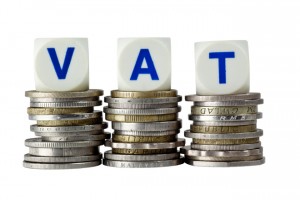From the Irish Independent 21/08/2014
 The Revenue Commissioners have recently been seeking payment of underpaid VAT in cases where taxpayers have issued incorrect VAT invoices and zero-rated supplies in error.
The Revenue Commissioners have recently been seeking payment of underpaid VAT in cases where taxpayers have issued incorrect VAT invoices and zero-rated supplies in error.
The VAT regulations provide that the EU VAT number of the customer should be stated on all VAT invoices where the “reverse charge” applies.
Otherwise the supply is liable to Irish VAT.
Care should be taken in this regard as this error can prove costly – the legislation provides for fines of €4,000 payable per incorrect invoice.
A valid VAT invoice is generally required in order to reclaim VAT paid to suppliers. It is therefore important that a business is satisfied that it is receiving proper VAT invoices when making claims for repayment of VAT.
Where simplified or electronic invoicing is being used, businesses should ensure that all the relevant required procedures are adhered to.
Invoice timing
Taxpayers should also ensure that all VAT invoices are issued in a timely manner.
VAT invoices must be issued by taxpayers within 15 days of the end of the month in which the goods or services were supplied.
The Irish VAT regulations provide that an invoice is only valid where the following information is stated on the invoice:
- the date of issue of the invoice;
- sequential number, based on one or more series, which uniquely identifies the invoice;
- the seller’s full name, address and VAT registration number;
- the purchaser’s full name and address;
In the case of a “reverse charge” supply of goods or services to a customer registered for VAT in another Member State:
- the customer’s VAT number; and
- an indication that the “reverse charge” applies or that the invoice relates to an intra- – – Community supply of goods;
- the quantity or volume of goods;
- the date the goods or services were supplied;
- the unit price exclusive of VAT and any discounts or price reductions not contained in the unit price;
- a description of the goods or services;
- the consideration exclusive of VAT;
- the rate(s) of VAT;
- the amount of VAT (at each rate if more than one rate);
If goods are given in exchange or in part exchange, a description of those goods plus the amount allowed on them must also be shown on the invoice.
In the case of a prepayment, the date on which the payment on account was made (if that date can be determined and differs from the date of the invoice).
If goods or services are supplied to the holder of a Section 56 VATCA10 zero-rating authorisation, the authorisation number must be shown on the invoice.
The Revenue Commissioners can impose a penalty for failing to issue proper VAT invoices. For this reason it is extremely important that taxpayers take extreme care when issuing VAT invoices to customers.
Caitriona Fitzpatrick is a VAT consultant at Grant Thornton
